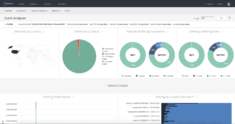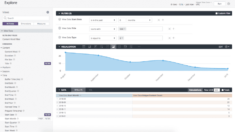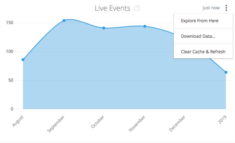Is Video The Answer To Overcoming Employee Change Fatigue?
CMMA BlogYou can’t browse LinkedIn these days without seeing article after article about digital transformation. At Kollective, we’re as “guilty” as everyone else in the industry in focusing our content around the challenges and opportunities facing companies as they undertake their digital transformation initiatives.
The topic is both broad and deep, and with technologies like artificial intelligence, machine learning, Big Data, the cloud, IoT, and enterprise collaboration and communication tools reinventing the way we all work, there’s always something fascinating to learn.
This can be fascinating if you’re a company leader. For employees, the words “digital transformation” are just as likely to elicit eye rolls as they are perked ears.
At least, that’s the takeaway from Gartner’s 2019 Strategic Priorities for Communicators report. According to their survey, employee change fatigue is the top strategic challenge facing employers and their communications teams, with audience information overload a close second.
With employees experiencing an average of three major changes each year, it’s no wonder they’re exhausted. While change has always been a constant in business, employees have never had to manage this much; as recently as 2012, employees only had to manage 1.75 major changes per year.
When employees are required to learn a whole new technology or process every few months just to do their jobs, it can leave them stressed and overwhelmed, impacting their performance. This is not exactly the reason you decided to modernize in the first place, is it?
Interestingly, while employers list employee fatigue as their top challenge, they also list employee fatigue as the challenge they’re least confident in their ability to solve, followed by declining employee engagement.
I get it. As a tech startup CEO, my job is built on change, but even I have to work to keep up with the constant change in my industry. I’ve also had employees question change in our organization and ask why we can’t do things the way we’ve always done it. If this is something I experience at a tech company filled with engineers, programmers, and self-professed geeks, you can only imagine what it must be like at an employer in a traditional industry like finance, healthcare, insurance, or retail.
However, those traditional companies and industries don’t get a pass. There’s no longer such a thing as a tech company. All companies are now technology oriented in some fashion regardless of industry. From customer platforms to e-commerce to instant transactions, the way every company works is powered by many of the same digital transformation trends. When it comes to change, the pace of the tech industry is now the norm across the board, not the exception.
While employees are experiencing far more change than before, employee change fatigue is not a new problem. Gartner notes that combatting employee change fatigue has been either the top or second highest priority for improving the effectiveness of the communications function for five years running.
If you’re in charge of enterprise communications, you must ask yourself: What will be different this year? How will you use communications to overcome employee change fatigue? What shifts do you need to make to help make change easier for employees?
For many companies, the use of video to effectively communicate is key. From video conferencing to on-demand video content to livestreams of major corporate events or CEO town halls, enterprises are using video to create connections with employees at scale. With today’s Millennial workforce and our Netflix/YouTube/Snapchat-fueled culture, video has become the preferred way people like to communicate, collaborate, and learn. There’s a reason YouTube is second only to Google in search volume; video is simply a more effective way to understand and retain information.
By embracing video as an employee communication tool, your company leaders can speak directly to your employees to share company strategy and help employees better understand the “why” behind the latest change. Imagine you have a new initiative you need to share – what is easy to communicate in a video livestream would likely go unread if delivered as an end-of-week email.
Of course, video isn’t as simple as sending out an all-hands invitation. It takes a strategy, leadership buy-in, and a reliable technology solution to deliver your content at scale. However, given the challenges companies face with employee change fatigue, this is the one change that can make all the others easier to swallow.
THE DEATH OF WINDOWS 7 REPORT
How today’s enterprises are preparing for tomorrow’s security disaster.
8 Ways to Boost Trust and Transparency in Your Organization
When employees and customers trust their leaders, a company is better able to weather crises and excels.
Related Blog Posts
From My VW to Your Video Campaigns, is DIY the Right Choice?
From the “maker movement” to how-to videos, we live in a Do It Yourself (DIY) era. Whether it originates from punk rock or anti-consumerism, the movement today leverages technology to connect people with similar interests and empowers them to fix, build, or hack their…
Diversity and Inclusion Within the Workplace
It’s June in the Bay Area and there are rainbow flags on almost every building as we celebrate Pride month. There are Pride events happening all over the world celebrating the impact that LGBTQI+ people have had on the world. Over the past few years, we have seen a…
Top Tips to Be an Authentic and Credible Speaker On Camera
Let me tell you, video is never easy to do well across an entire enterprise. I know first-hand as we host a mandatory monthly All Hands Meeting at Kollective. While my event services team can share details on the planning, logistics and technology that it takes to…
The post Is Video The Answer To Overcoming Employee Change Fatigue? appeared first on Kollective Technology .















 For me, the most useful technical metric during a live event is the buffering report. If there is buffering in a specific location you can pull out user data and connect with them, informing them that you are aware of the problem and remind them they can watch on-demand after the live event. And, a quick call to your Help Desk lead with this information will make you a hero.
For me, the most useful technical metric during a live event is the buffering report. If there is buffering in a specific location you can pull out user data and connect with them, informing them that you are aware of the problem and remind them they can watch on-demand after the live event. And, a quick call to your Help Desk lead with this information will make you a hero.

